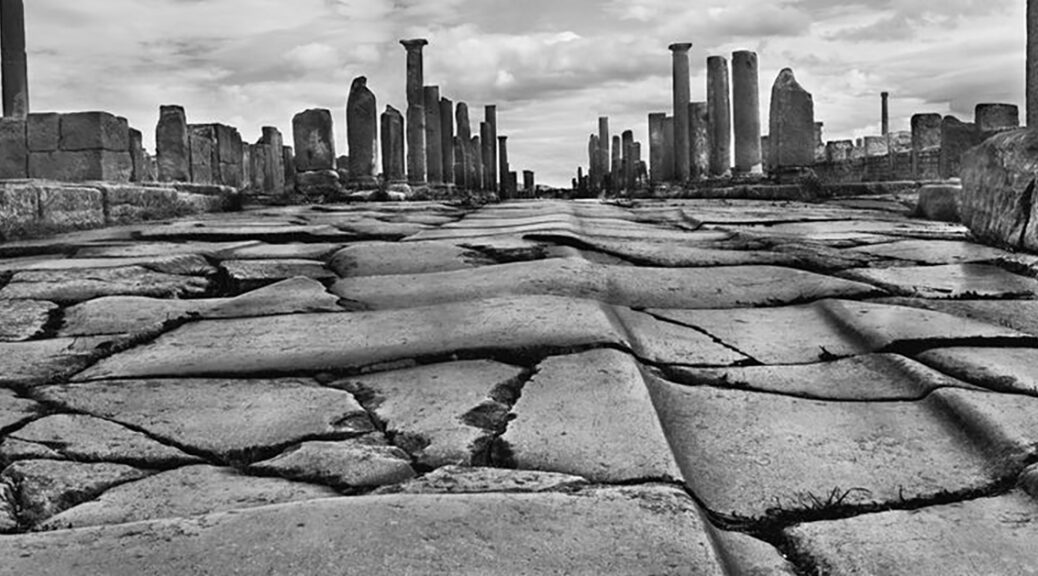Read, hot & digitized: Librarians and the digital scholarship they love — In this series, librarians from UTL’s Arts, Humanities and Global Studies Engagement Team briefly present, explore and critique existing examples of digital scholarship. Our hope is that these monthly reviews will inspire critical reflection of and future creative contributions to the growing fields of digital scholarship.
This post was written by Sarth Khare, the Global Studies Digital Projects GRA at Perry-Castañeda Library and a current graduate student at the School of Information.
Josef Koudelka is one of the most respectable names in documentary photography. To many photographers like me, his work is as perfect as it gets. His enigmatic images immortalize the slivers of rare moments, spaces, and events that he witnessed in his extraordinary life. Whether they are of Warsaw Pact troops marching in Prague, of Roma Communities in Romania and Spain, or the large panoramas of landscapes across cities, his photos have the mystical power to transport the viewer into the time and world the photo was taken in.
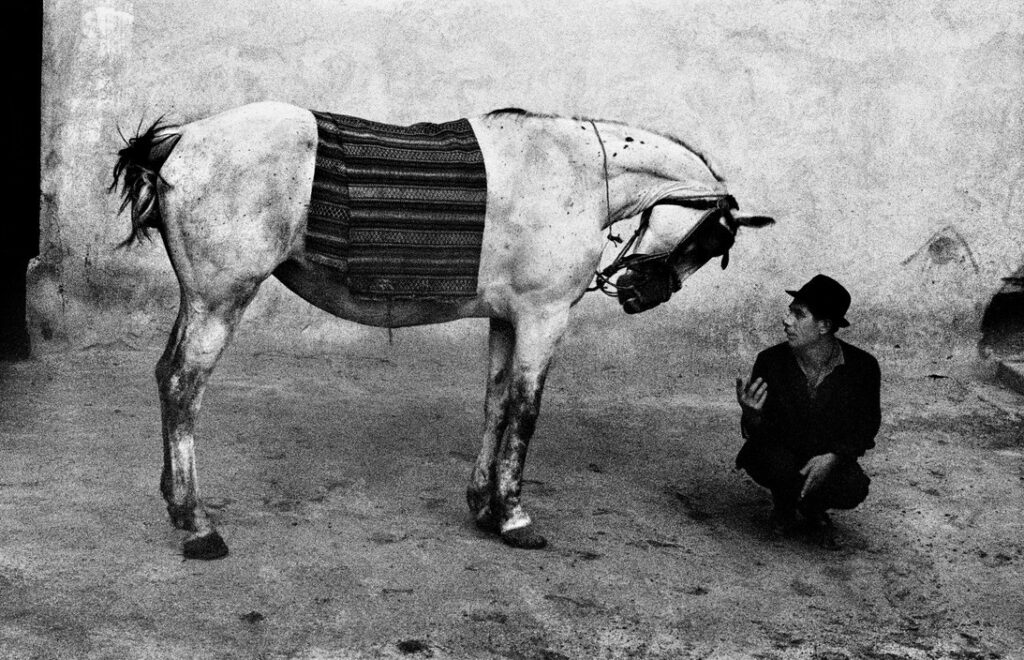
Josef Koudelka | Romaina 1968. © Josef Koudelka | Magnum Photos – https://www.magnumphotos.com/arts-culture/koudelka/
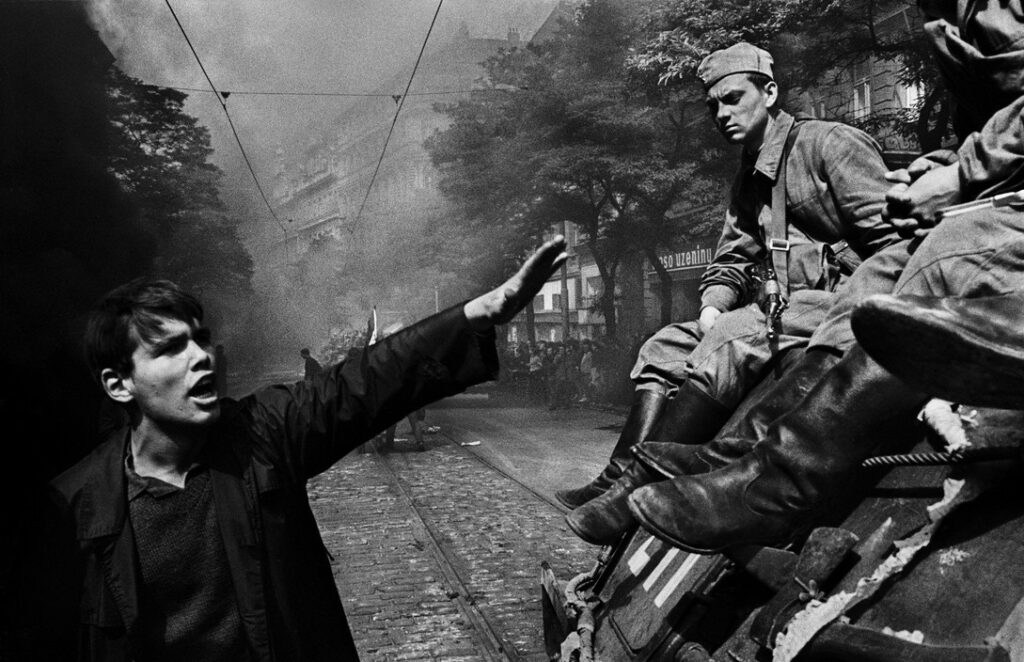
Josef Koudelka | Invasion 68: Prague Invasion by Warsaw Pact troops in front of the Radio headquarters. Prague, Czechoslovakia. August, 1968. © Josef Koudelka | Magnum Photos – https://www.magnumphotos.com/newsroom/josef-koudelka-invasion-prague-68/
Ever since I got to know about his work, I would go online and look for his photos. I would easily spend hours, looking for the shades of grays, the composition, angles and emotive expressions that made his work so rare. But I never got the clarity or satisfaction that one would get by looking at a physical print up-close. The materiality of the paper, the grains shining through and the rich gradience in the tones always seemed to be absent in the digital scans of his work that were available online.
In the middle of the global pandemic, the National Library of France announced an exhibition “Josef Koudelka. Ruins” which ran from September 15, 2020 to December 16, 2020. The exhibition highlighted panoramic landscapes taken by Josef Koudelka over 28 years across various archeological sites across the world.
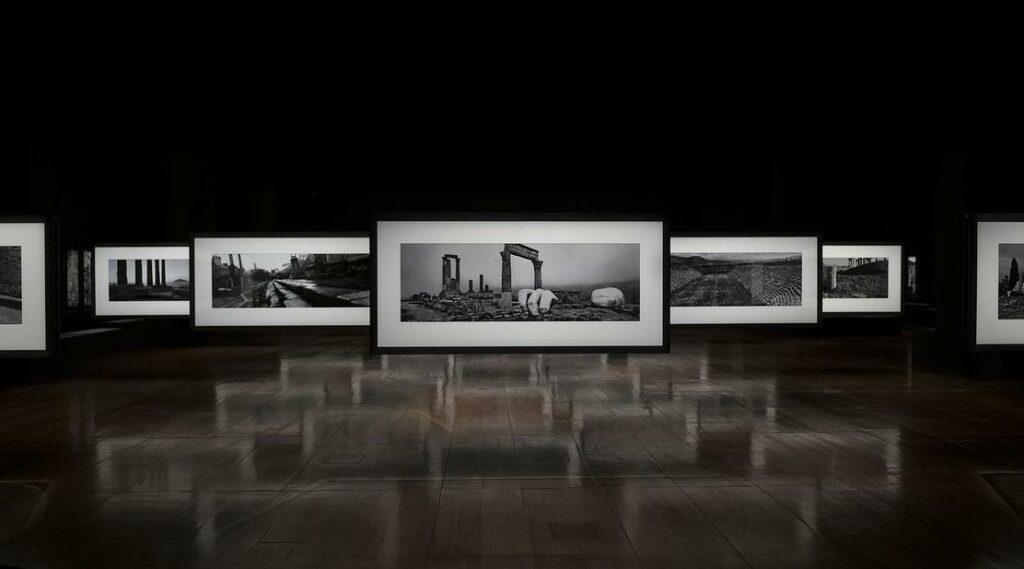
© Josef Koudelka | © photo: Jérémy Halkin / BnF- https://www.bnf.fr/fr/agenda/josef-koudelka-ruines#bnf-l-exposition-en-images
What was most exciting about the exhibition was the accessibility it provided during the pandemic. The physical curation of the exhibit was translated to an online tour using 360° shots. Anyone in the world could access the exhibition and travel through sixty points of view, including, through zooming tools, the ability to look at prints from close and far. One can read the texts on the picture rails along the prints, but more than that, from within the 360° shots itself, viewers can click to view high-resolution scans of the prints.

Myra, Turkey, 2013 © Josef Koudelka /Magnum Photos – https://www.bnf.fr/fr/agenda/josef-koudelka-ruines#bnf-l-exposition-en-images
This online experience completely changed the idea of exhibitions for me: I could simultaneously experience the detailed nuances of Koudelka’s photographs while I could also enjoy moving in a world that was designed around them.
I felt elated with this experience—that galleries and curators alike are striving to reproduce a similar sense of awe online. The push towards this novel approach was two-fold. Firstly, the need of making the exhibition reach people during the pandemic, and secondly, the current tools and technologies that can make this dematerialization of space possible across the internet. 360° virtual tools have been used in real estate and architecture for a while now but have only recently become sophisticated enough to get realistic renderings of spaces. Overlaying such 360° visualizations with high-resolution scans of the static images was a missing piece of the larger puzzle—and what makes this tour so engaging and memorable.
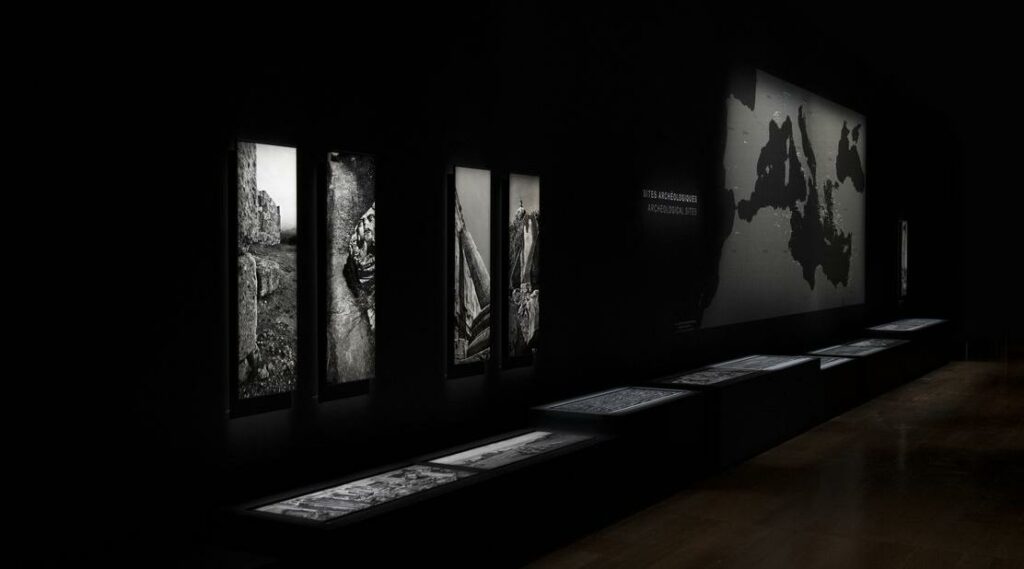
© Josef Koudelka | © photo: Jérémy Halkin / BnF- https://www.bnf.fr/fr/agenda/josef-koudelka-ruines#bnf-l-exposition-en-images
Although the tour mimics the exhibition in all mannerism, and I believe it is one of the most perfect renderings yet, I can’t say that it was ideal in all means. To physically be in a space with such larger-than-life panoramic images and seeing their juxtaposition is an extraordinary experience. It teleports the viewer from the gallery into the space of the image and has the power to change the viewer.
Traveling within the computer screen, however, can become repetitive. But these are current limits of our technology. Within these limitations, this digital exhibition is a milestone. With the growth of virtual reality, I feel that future reproductions that build on this exhibition would become more integrated and holistic.
I witnessed the exhibition, from my home in India, without having to go to France, and experienced the details and depth of the work of a master whom I truly admire. I must have already spent more than 10 hours roaming digitally along the exhibition spaces of the National Library of France. And I continue doing so now: long after its physical counterpart has ended the digital exhibit is still on display.
I invite everyone reading this to click on the link below and experience this extraordinary event themselves. http://expositions.bnf.fr/koudelka/
UT Austin is also very lucky because the Harry Ransom Center is the home to about 200,000 original prints of Magnum Photos. Magnum Photos is the world’s most influential international photographic cooperative of which Josef Koudelka is a part of. One can access their archives and see the collection details at the following link: https://norman.hrc.utexas.edu/fasearch/findingAid.cfm?eadid=00502
One can also access Koudelka’s photobooks at the Fine Arts Library here at UT Austin. All of his major publications are available here including the forementioned project “Ruins” – https://search.lib.utexas.edu/permalink/01UTAU_INST/9e1640/alma991058227980106011
His seminal work “Exiles” can be found here as well-
https://search.lib.utexas.edu/permalink/01UTAU_INST/9e1640/alma991021857199706011

